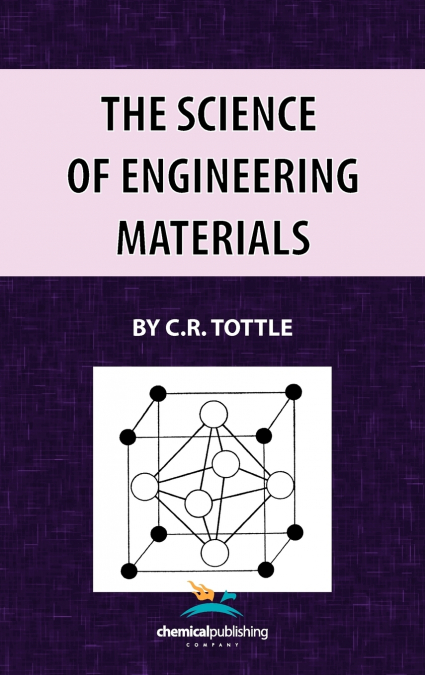
C. R. Tottle / CRTottle
Contents - 1. The Free Atom- The contribution of spectroscopy - The Rutherford-Bohr model of the atom - Modern quantum theory - The Pauli exclusion principle - The periodic system - Isotopes -2. The Bound Atom - Band structure - The attractive and repulsive forces in binding - Stable electron configurations - Ionic bonding - Covalent bonding - Van der Waals’ forces - The metallic bond - Implications of the type of bond on the structure of elements - Implications on conductivity -3. Constitution - Crystallographic principles - The unit cell - The face centred cubic lattice - The close-packed hexagonal lattice.The body-centred cubic lattice - Twin crystals - The rhombohedral lattice - The tetragonal lattice - The structure of compounds - The silicate structure - Glasses - Carbon compounds -4. Imperfections in Crystals - The surface - Vacant lattice sites - Interstitial atoms - Line and plane defects - Dislocations - Dislocation climb - Dislocation jogs - Imperfect dislocations - Sessile dislocations - Frank-Read sources - 5. The Vibration of Atoms and their Thermal Properties -The lattice vibration - Specific heat - Thermal expansion - Melting - Anisotropy - Thermal conductivity of insulators - Thermal shock - Thermal conductivity of good conductors - 6. Electrical, Magnetic, and Optical Properties - Electrical conductivity - Ionic conductivity - Semiconductors -Thermoelectric effects - Magnetic properties - Ferromagnetism - Antiferromagnetism and ferrimagnetism - Dielectrics - Optical properties - Other electromagnetic radiations - 7. Mechanical Properties - General aspects - Electricity - Plasticity - Resolved shear stress - The role of dislocations in plastic flow - The effect of temperature - Fracture - Creep - Fatigue - Thermal cycling -8. Metals and Alloys - Properties of pure metals - Compatibility - Interstitial solid solution - Substitutional solid solution - Intermetallic compounds - Equilibrium and non-equilibrium - The properties of alloys - Precipitation in alloys - Complex alloys - 9. Non-metallic Materials - General -Timber -Stone, concrete, and asphalt - Plastics -Ceramics and glasses -Cermets -10. Service Factors -General - Heterogeneity - Residual stresses - Corrosion - Radiation damage - Conclusion -Further Reading - Author Index - Subject Index - Preface - This book attempts to provide the broad background, to illustratethe basic reasons for the properties of elements, and to explain theconsequences of chemical combination, alloying, and mixing. Mostprevious books have touched only lightly on the atom itself, but myexperience in teaching engineers in the University of Manchestersuggests that a greater depth of approach is welcome, perhaps becauseit can account for so much of the subsequent behaviour ofmetals.